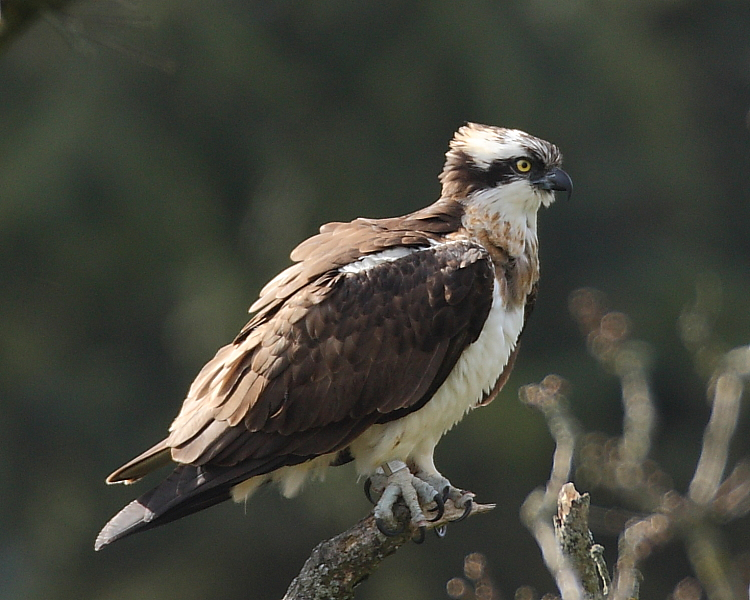Blagdon Lake Birds
March 2013 News
Friday 1st March [Grey]
This afternoon, the Slavonian Grebe Podiceps auritis was over against the North Shore, close to the reed bed and best viewed from Green Lawn. The Black-necked Grebe Podiceps nigricollis was in the trees at Wood Bay Point again and is really beginning to assume its summer plumage, making it quite hard to spot when it's stationary among the branches. There were only 59 Canada Geese Branta canadensis today, the Greylag and neck-collared individual having gone.
Although the weather is a little against them at the start of the month, we can expect the first spring migrants to be arriving in the next couple of weeks. Chiffchaffs Phylloscopus collybita and Sand Martins Riparia riparia will probably be the first, unless we get a Northern Wheatear Oenanthe oenanthe drop in on its way north. I shall be leaving for Trinidad with Daniel Hargreaves tomorrow, so expect to miss the first arrivals, but would welcome reports from the lake while I'm away (contact details on Home Page), and will endeavour to pass them on when I have access to the web. I'll also post a diary from the Caribbean to let you know how the expedition is getting along. We'll be concentrating on the bat fauna, but of course, I'll be taking in everything from invertebrates to birds.
Saturday 2nd March
The Slavonian Grebe Podiceps auritis was reported along the North Shore again today (per Avon Birds).
TRINIBATS DIARY: I made a rather shocking discovery of a Deer Tick on the back of my knee while flying between St. Lucia and Trinidad! It's now safely removed to a bath of alcohol but must have been picked up at Blagdon Lake yesterday, probably at Burmah Road while watching the Black-necked Grebe. There were hundreds of Black Vultures coming in to roost on the ridge above our guest house on the outskirts of Port of Spain at dusk.
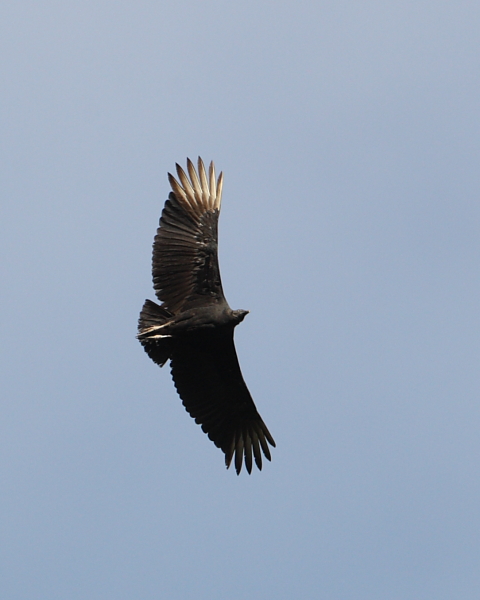
Sunday 3rd March
News from Sean Davies to say the Slavonian Grebe Podiceps auritis was in Home Bay this morning and the Common Sandpiper Actitis hypoleucos still on the dam. Lyndon Roberts reported a Jack Snipe Lymnocryptes minimus at Top End and Ron Clevely saw a Eurasian Woodcock Scolopax rusticola at Hellfire Corner.
TRINIBATS DIARY: Daniel and Geoffery Gomes were busy with arrangements for the arrival of the group on Tuesday, so David, Denise and I hired our driver Sydney to take us to the Asa Wright Centre for the day. We had an interesting time and saw lekking White-bearded and Golden-headed Manakins out on the trail, and a good selecton of Honeycreepers, Hummingbirds, Tanagers and Crested Oropendola from the balcony. Back at the guest house, I saw Tropical Mockingbirds, Spectacled Thrush and Orange-winged Parrots alongside other species seen already. We also visited a bat roost of Seba's Short-tailed Bat Carollia perspicillata in an old cocoa drying house, and in the evening we walked up the road to Geoffery and Stephanie's apartment and set up a mist net over the swimming pool and caught a Seba's Short-tailed Bat.
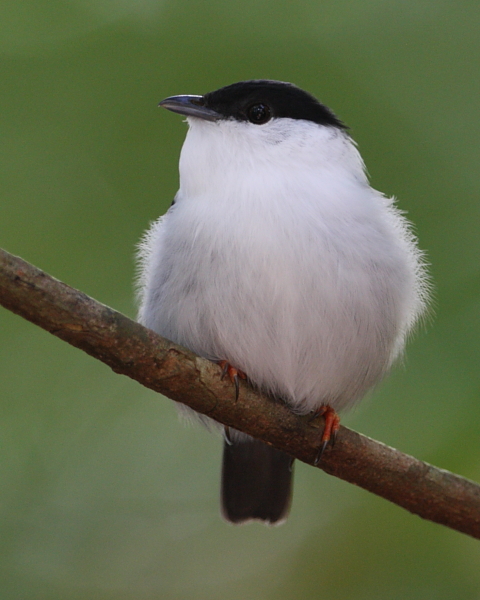
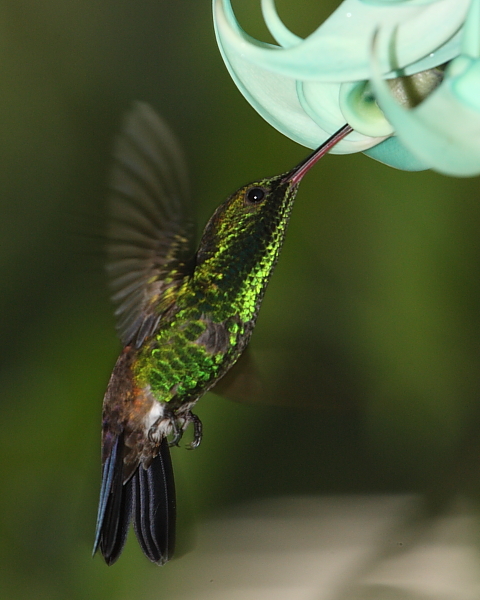
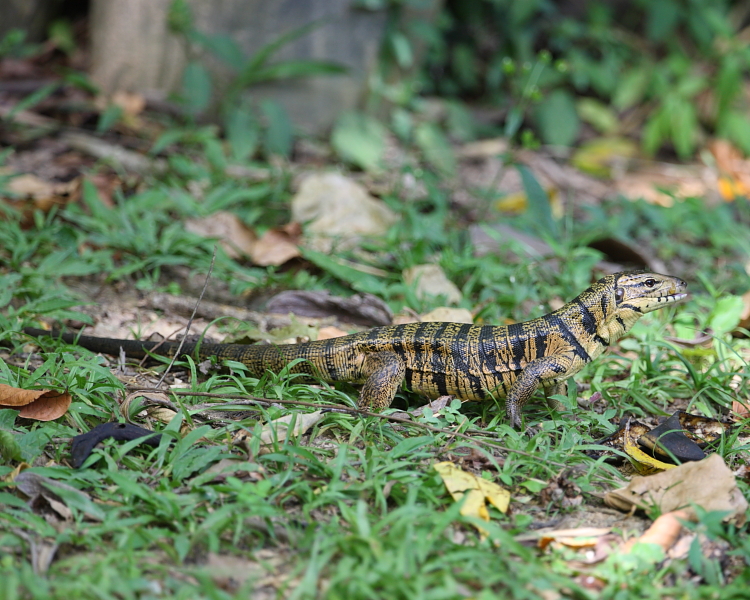
Monday 4th March
I understand the Slavonian Grebe Podiceps auritis was reported in Home Bay (per Birdguides) and Robert Billingsley, I think, saw a Red-breasted Merganser Mergus serrator close to the dam and in Butcombe Bay.
TRINIBATS DIARY: Daniel and Geoffery Gomes met with the environment ministry this morning and went to talk to a girls secondary school about bat conservation this afternoon. David, Denise and I walked into Port of Spain and visited the Botanical Gardens at the bottom of the hill. We added a few new bird species including Southern Lapwings, Smooth-billed Ani and Striated Heron, then this afternoon we went out into the Caroni Swamp Bird Sactuary (a RAMSAR site) with Nanan's Boat Tours to see the 2000, or so, Scarlet Ibises (the national bird of Trinidad) come in to roost with Snowy Egrets and Tricoloured Herons. It was quite a spectacle! While we were out, we also saw a Silky Anteater, White-winged Swallow, Ringed Kingfisher, Yellow-crowned Night and Little Blue Herons, several flocks of Blue-winged Teal, an Osprey and quite a few Spotted Sandpipers along the channels between the Red and Black Mangrove trees. On the way back to the boat yard, we saw at least five species of bat (none of which were specifically identified). We will be visiting again with the group later in the week on a morning trip.

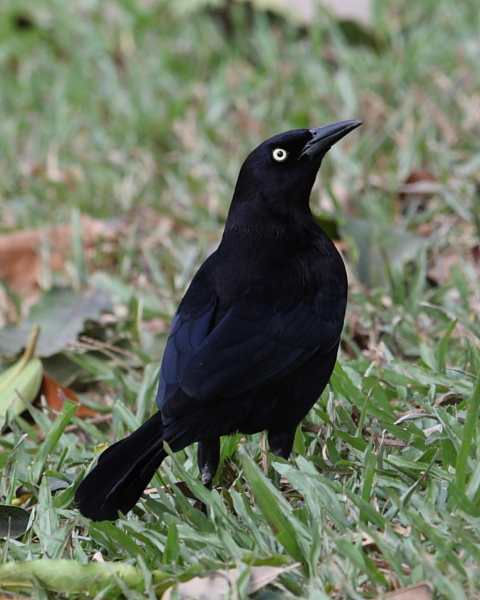
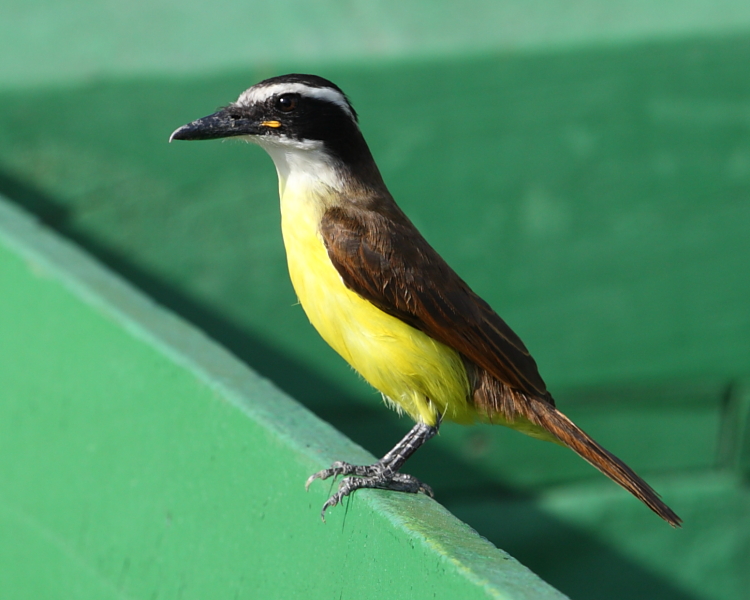
Tuesday 5th March
Ian Hayes sent me the following: Spent a good part of the afternoon along the south side looking for the Slavonian Grebe without success. Could have been on far side which was difficult to get clear views of in the heat haze! Couldn’t find the Common Sandpiper after a quick look on the way home. The Black-necked Grebe Podiceps nigricollis was in its usual spot under the trees but very hard to spot. Other than that, nothing unusual, though spring has sprung and there were some very active and drumming Great Spotted Woodpeckers Dendrocopos major seen and heard. Plenty of butterflies around too.
The Slavonian Grebe Podiceps auritis was reported along North Shore on Birdguides and Richard Keel reported 3 (presumed) Lesser Redpolls Carduelis cabaret at Ubley Hatchery.
TRINIBATS DIARY: We had a lazy day today getting some of the gear ready for the start of the expedition tomorrow. I watched hundreds, if not thousands of Black Vultures over our guest house on the edge of Port of Spain. There were a few Turkey Vultures, a couple of White Hawks, an Osprey and what I thought was probably a Crane Hawk, but as this is a description species it'll have to be one that got away. While Daniel and Geoffery went to collect the rest of the group, who arrived this evening, David, Denise and I set up a net at the swimming pool again, and caught a Jamaican (aka Mexican or Common) Fruit Bat Artibeus jamaicensis and a single Velvety Free-tailed Bat (aka Pallas's Mastiff Bat) Molossus molossus. I have uploaded some images from the trip so far on my photo website.
Wednesday 6th March
TRINIBATS DIARY: This morning we took another trip back into Caroni Swamp Bird Sanctuary, just south of Port of Spain. The focus was more general than the trip earlier, when we went to see the Scarlet Ibis roost come in. Today, we saw 2 Silky Anteaters, a Crab-eating Raccoon, a Boa Constrictor, Red-rumped Woodpecker, Straight-billed Woodcreeper, Green-throated Mango, Common Potoo and a line of 5 Proboscis Bats Rhynchonycteris naso on a Red Mangrove. After a quick stop at a Trini-Indian Restaurant, we went to the coast for a trip to visit an island bat cave to see Greater Bulldog (or Fisherman) Bats Noctilio leporinus mastivus, a species that catches small fish from the sea by trawling with its long legs and large claws. While waiting at the dock we had Magnificent Frigatebirds flying around our heads, and on the way out we looked for Atlantic Bottlenose Dolphins and had up to six right around the boat (so close I couldn't focus on them with the 300 mm lens). The bat roost contained about 150 bats and we had fantastic views of them fishing after dark, by torchlight, before we headed back after an amazing day. I've posted a few pictures on my photo website and I'll add others, as I get a chance. We'll be out of range for a few days from tomorrow, and will be netting bats in Nariva Swamp (mosquito hell) tomorrow evening.

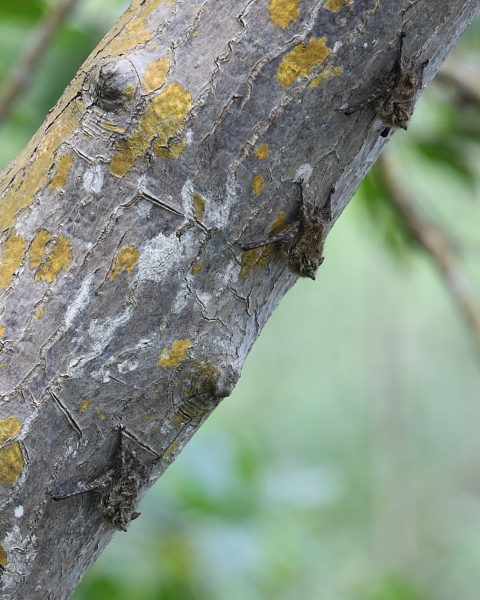

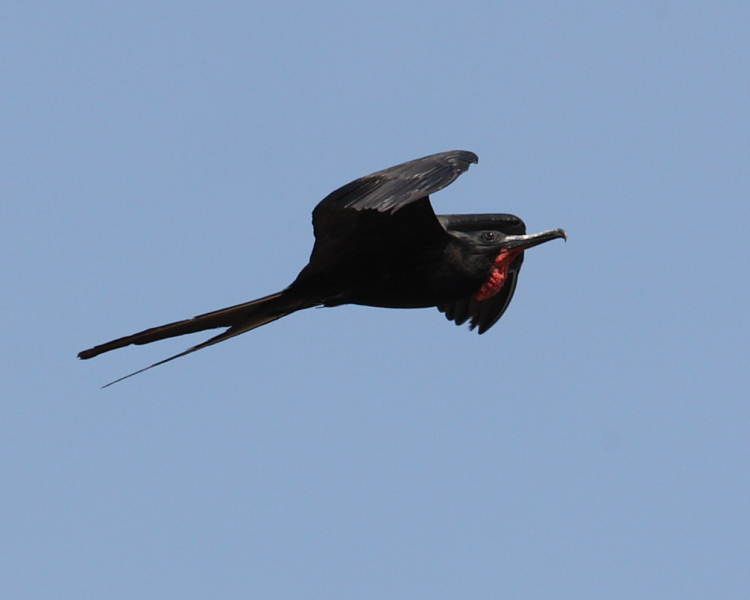
Thursday 7th March
TRINIBATS DIARY: Up early at 0600 hrs and we travelled to Mayaro in the south-east of the island during the morning. After a quick turn around at our new accommodation on the beach we headed off to the Bush Bush Sanctuary in the Nariva Swamp where we had a guided forest walk. We saw Red Howler Monkeys and the re-introduced Blue-and-Yellow Macaw. I also caught up with House Wren, Blue-black Grassquit, Yellow-bellied Elaenia and Yellow-headed Caracara. Then, as it got dark we set up nets for a long evening during which our bat tally increased from 5 spp. to 31 spp. We also caught a Rufous Nightjar, and a Pink-toed Tarantula took a fancy to my camera while I was checking nets. On the way back out of the forest we had great views of a Ferruginous Pygmy Owl sitting on a branch a few feet away from the car. I crawled into bed at about 0100 hrs after arriving back to find our wonderful host Stephanie had put out a birthday cake, complete with candles, for me. Geoffery also promised to take me for a short walk tomorrow to see a couple of bird spp. as a birthday present.
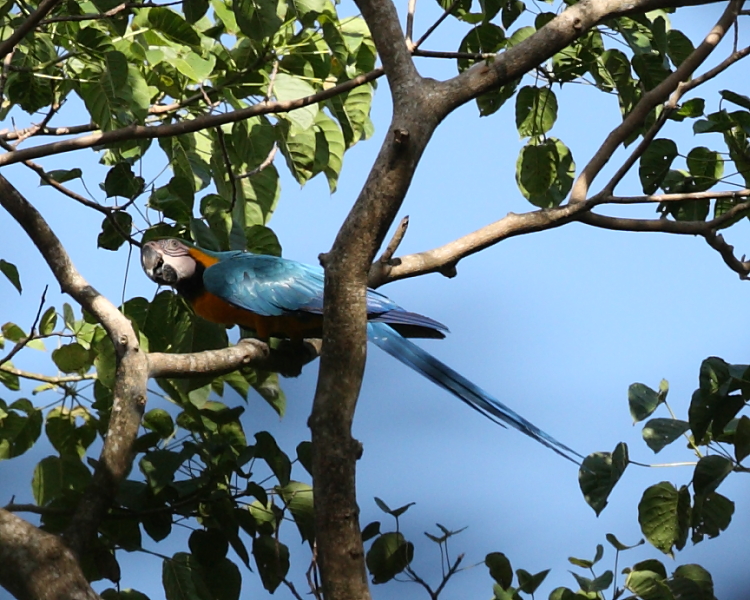
Friday 8th March
TRINIBATS DIARY: We had a bit of a lazy morning to get over yesterday, then headed off to Trinity Hills for a short forest walk with a different guide, while I was shown Least Grebe, Spectacled Cayman, a terrapin sp. and Black-crested Antshrike by Geoffery. There were also at least 17 Pied-billed Grebes on the pond too. After a bite of afternoon lunch, we headed back out to the ponds at Trinity Hills to do more netting. On the way we saw a juvenile Double-toothed Kite. It wasn't as productive as yesterday, but we added Hairy Big-eyed Bat Chiroderma villosum to the trip list and, rather amazingly, another ♀ Greater Bulldog (aka Fisherman) Bat. I photographed the fishing bat when we released it on a palm tree and it reversed up the trunk at an amazing lick with its huge claws and legs. It was quite impressive.


Saturday 9th March
TRINIBATS DIARY: A bit of a faux-pas on my part this morning and I ended up not going on the 'mud volcano' walk at Trinity Hills and as a consequence missed some Solitary Sandpipers and a Plumbeous Kite. In the late afternoon we set off back into the Trinity Hills sanctuary and set up some nets on a ridge in the forest with the aim of intercepting bats crossing from one side to the other. In all fairness, this strategy worked pretty well and we caught 17 species of bat including two news species for the trip; the Lesser Dog-like Bat Peroteryx macrotis and White-bellied Big-eared Bat Micronycteris minuta, which brought the tally up to 34 for the trip so far. The Trinity Hills, in the south-east and south of Trinidad, is an oil producing area with lots of 'nodding donkeys' scattered throughout the forest which in effect gives us easier access, though permits must be obtained first.
Sunday 10th March
TRINIBATS DIARY: This morning we went for a walk with our Trinity Hills guide Philip in the forest behind his house. I was fortunate to get some new birds including a pair of Channel-billed Toucans, Turquoise Tanager and some nice insects. It was, however, extremely hot and humid and I was glad to get out in the end. We saw a number of Brown Tent-making Bats Uroderma bilineatum, and Daniel explored a number of hollow tree trunks for roosts. In the late afternoon, we were back into the forest at a different high point to try and intercept ridge crossing bats. I saw a Golden-crowned Warbler Basileuterus culicivorus olivascens a resident Trinidad bird and we caught 16 bat species, including another two firsts; Pale Big-nosed Bat Phyllostomus discolor and Hairy Big-eared Bat Micronyteris hirsuta. On the way out of the forest along one of the access roads Geoffery spotted a snake crossing, and lept out of his pick-up and captured a Rainbow Boa Epicrates cenchria. It allowed itself to be handled and photographed before being returned to the forest out of harms way. Another late late supper when we got back and then we packed ready for an early exit from our beach-side property at Mayaro for the next destination where we'll be exploring the savannah in the centre of the island.
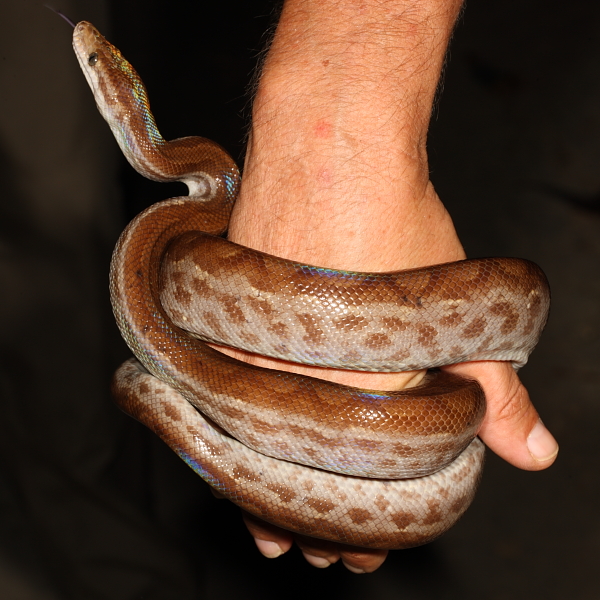
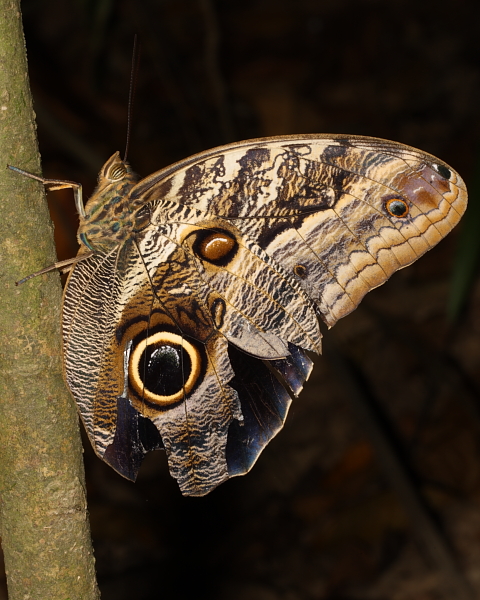
Monday 11th March
This from Chris Stone: "Visited your patch today, strong n/e winds and very cold. Had 5 Sand Martins Riparia riparia from the hide, as well as a Chiffchaff Phylloscopus collybita there. Found a ♂ Greater Scaup Aythya marila in Butcombe bay, and also 30 Eurasian Wigeon Anas penelope. On the way back to the Top End, was scanning lake when Black-necked Grebe Podiceps nigricollis swam through my field of view, nice in summer plumage. Also in the trees c. 10 Eurasian Siskins Carduelis spinus feeding in a tree, and singing despite the wind."
TRINIBATS DIARY: We travelled back north during the morning to Hacienda Jacana at Talparo, where we have lodges beside a small pond. The surroundings are quite beautiful and I'd have liked time to explore. I did see Yellow-rumped Cacique, Streaked Flycatcher, Violaceous Euphonia, White-headed Marsh Tyrant and Pied Water Tyrant from the balcony. After lunch, we set off out to explore some old ice houses where we found a couple of bat species already seen. Then, as it got dark, we went to the entrance to Arena forest where we met just about the entire Ministry of Agriculture Disease Control Team (bats are still considered to be pests in Trinidad), to spend an evening showing them what we do. We caught quite a few bats,though I don't have the full details to hand yet, as well as a Tropical Screech Owl. It's another early start tomorrow, looking to see if we can find some vampires that haven't been culled.
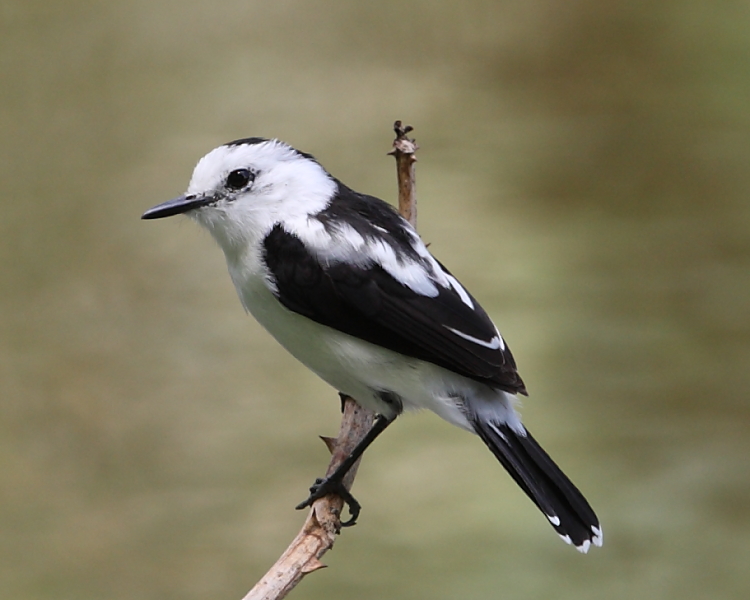
Tuesday 12th March
TRINIBATS DIARY: It was like something out of a horror story today. We caught two of the three blood-feeding species of Vampire Bat (Common and White-winged), Ghost-faced Bat, and I managed to photograph two species of Tarantula Spider. Obviously, with the Vampire Bats being subject to culling since the 1940s, the populations are not big, so I am not publicising the whereabouts of the roosts. It was, however, a real privilege to have seen them. We've now seen 40 of the 67, or so, bat species of Trinidad, which is something of a triumph for the Trinibats team. I'm still adding a few birds, the most spectacular of which today was the Ruby-topaz Hummingbird and the other good-looker was a New World equivalent of the Bee-eater, a Rufous-tailed Jacamar, that we watched hawking dragonflies from a perch over the pond that we overlook from our dining area. I must say, Jesse and Helen, are quite exceptional hosts.
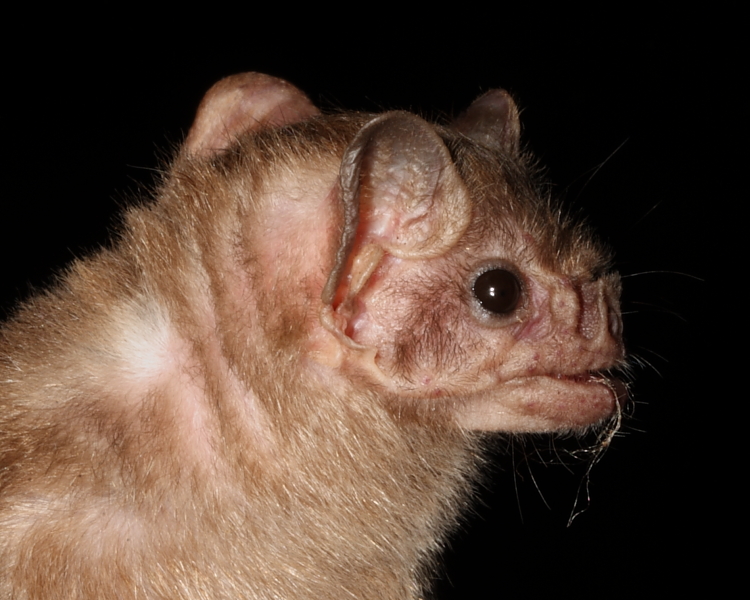
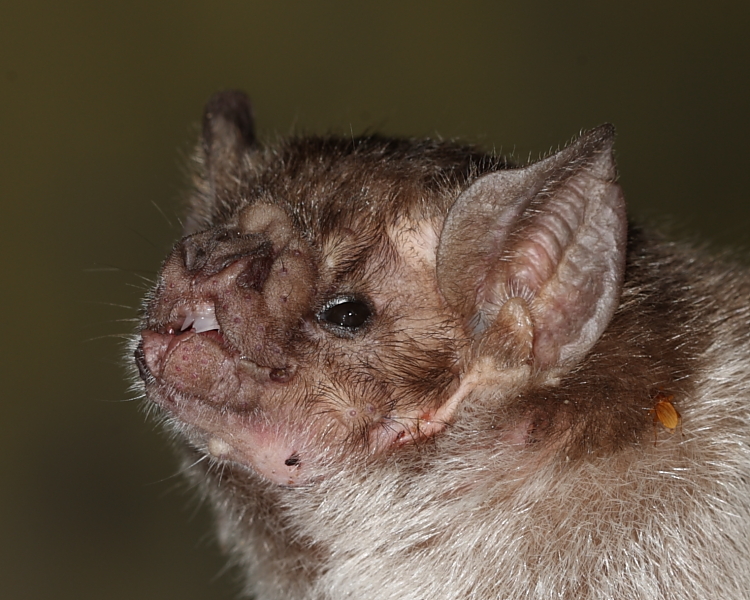

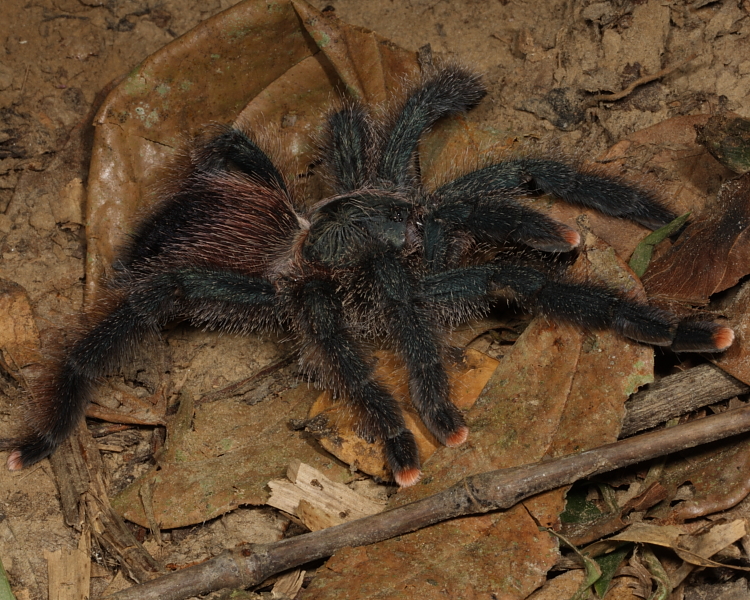
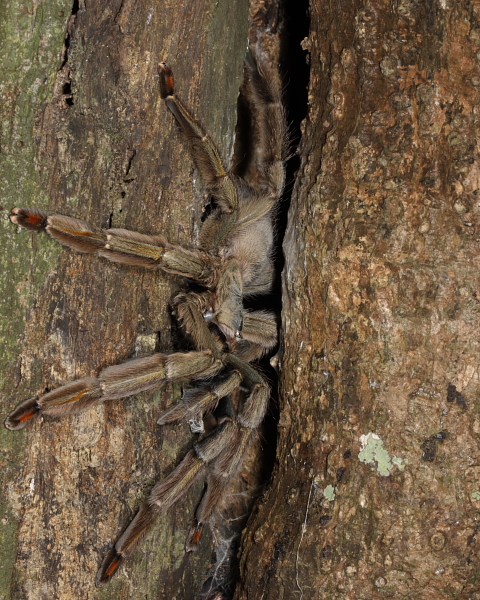
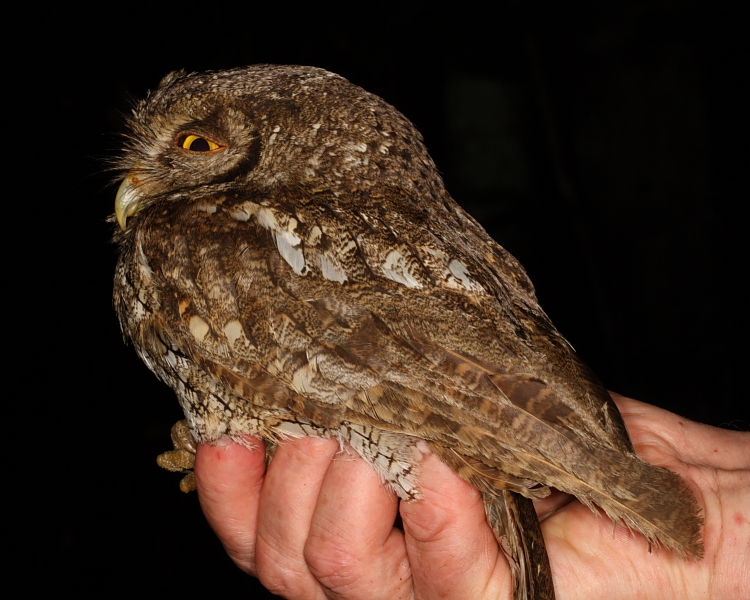
Wednesday 13th March
Roger and Jean Staples reported (per Avon Birds) the Black-necked Grebe Podiceps nigricollis, a Chiffchaff Phylloscopus collybita and the ♂ Greater Scaup Aythya marila.
TRINIBATS DIARY: We had a lazy morning during which I had a look around the grounds of the Hacienda Jacana where we're staying, before heading off to Tamana Hill Bat Cave. This was an extraordinary session. Many of the team went into the cave to see the thousands of bats roosting while others (like me) stayed outside setting up a Harp Trap and photographic gear to film the emergence. During a 2 hour period, the team removed over 700 bats of 6 species from the one trap! We also added two more species to the trip list, making this the most successful of the 3 Trinibats Tours yet. We've seen 42 species so far.
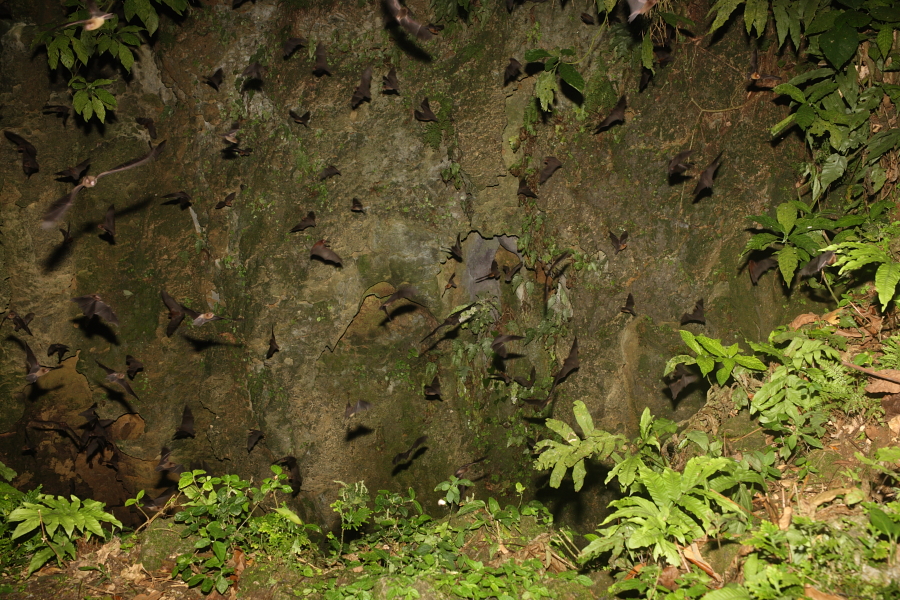

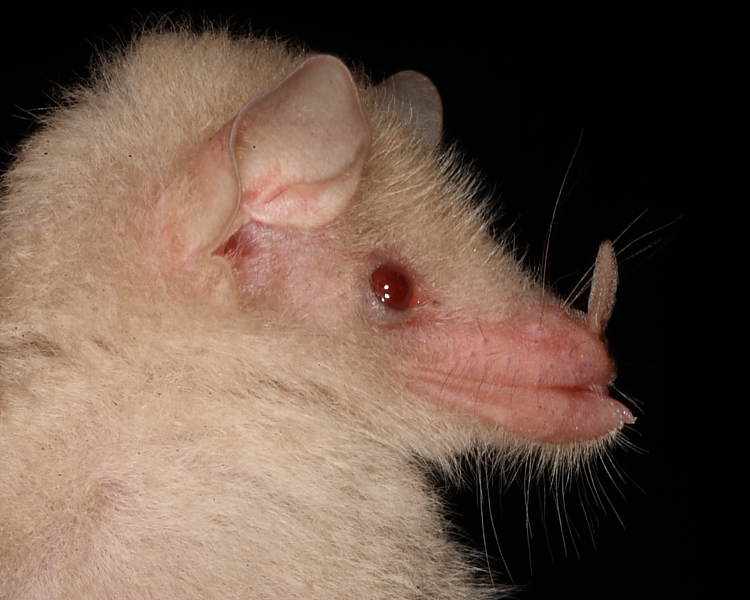
Thursday 14th March
TRINIBATS DIARY: Well, the final totals for the Harp Trap yesterday were: 497 Davy's Naked-backed Bat Pteronotus davyi, 138 Ghost-faced Bat Mormoops megalophylla, 62 Common (aka Parnell's) Moustached Bat Pteronotus parnellii, 28 Lesser (aka Wagner's) Moustached Bat Pteronotus personatus, 2 Geoffroy's Hairy-legged Bat Anoura geoffroyi (one of which was an albino) and 1 Trinidadian Funnel-eared Bat Natalus tumidirostris. In addition, the team that went into the cave found two more species that we didn't catch, Greater Spear-nosed Bat Phyllostomus hastatus and Seba's Short-tailed Fruit Bat Carollia perspicillata. A group of researchers working on Guppies Poecilia reticulata joined us for a while, during which time we saw a troop of Red Howler Monkeys moving through the tree canopy. Later, after dark, we saw several Stick Insects and other invertebrates, and Geoffery Gomes caught a small snake to show us. It is a mimic of the Fer-de-Lance an extremely venomous pit viper that, in some ways, I was glad not to have seen during the trip.
Today, we had a look around the gardens of Hacienda Jacana where we've been staying. We saw the Great Fruit-eating Bat Artibeus lituratus hanging in a palm leaf tent and then I spent some time photographing hummingbirds visiting the feeders put up by our hosts outside their house. During our final lunch as a group, we saw a Yellow Warbler, Violaceous Euphonia, Green Kingfisher and a Tufted Coquette from the balcony. Then we took the bulk of the group to the airport and Daniel, Adrian and myself came back to Port of Spain.

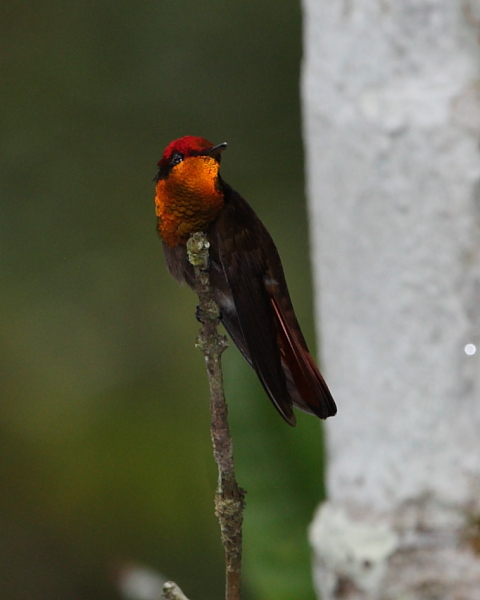

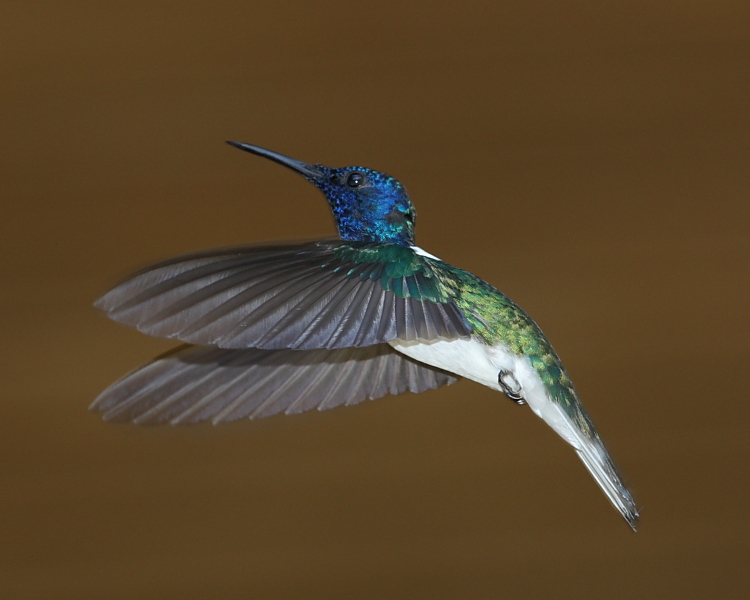
Friday 15th March
TRINIBATS DIARY: Daniel and Geoffrey spent the morning together and I was editing photos before we set off to the airport for the flight home via St. Lucia.
Saturday 16th March [Cold, with frequent wintery showers] OPENING DAY OF THE FISHING SEASON
I arrived home this late this morning and went over to see Mark of London Camera Exchange at Chew to pick up my scope that had been sent off to Swarovski for repair while I was away. LCE and Swarovski provided a great service making it as good as new, free of charge. On the way back home, I had a brief look at Blagdon, but aside from about 18 Common Goldeneyes Bucephala clangula together at Top End with lots of Aythya ducks, nothing else caught the eye except lots of boats and bank fishermen braving the perishing cold conditions.
Sunday 17th March [Cool but quite pleasant when the sun shone]
Having missed the first flush of spring migrants while I was away, I was hopeful of catching up with some in the sunshine today, but I had no such luck. The wintering Common Sandpiper Actitis hypoleucos was on the dam wall, and a ♂ Greater Scaup Aythya marila was feeding off the dam before flying down to Top End where it fell asleep. I found the summer-plumaged Black-necked Grebe Podiceps nigricollis over in Rugmoor Bay, but there was no sign of the Slavonian Grebe that was present when I went away earlier in the month. I counted 11 Common Goldeneye Bucephala clangula, 28 Eurasian Wigeon Anas penelope and saw the wintering flock of Fieldfares Turdus pilaris, Redwings Turdus iliacus and Common Starlings Sturnus vulgaris at Holt Copse chattering away in the sunshine. We are doing the WeBS count, a little late admittedly, tomorrow.
Monday 18th March [Sunny spells]
All the team turned out for the WeBS count this morning but despite looking carefully, we could not find the ♂ Greater Scaup or Black-necked Grebe. Indeed, I stayed on for an extra hour and a half looking for the grebe without success. There has been a marked reduction in the number of Common Goldeneye Bucephala clangula over the weekend and we only saw 5 today. This is due, without doubt, to the start of the fishing season and the resulting increased disturbance. The Common Sandpiper Actitis hypoleucos was on the dam as usual. I have posted the full count on the WeBS count page.
I'm not aware that Natural England have been in to cull our Ruddy Duck(s), though I understand they have been to Chew, but since coming home I have yet to see one. Perhaps they've been eradicated? There were lots of Eurasian Siskins Carduelis spinus about, especially at the Lodge, and as soon as I filled the feeders, one came down to the sunflower hearts. I also saw a Small Tortoiseshell Aglais urticae in the sunshine at Rugmoor and 2 Northern Ravens Corvus corax flew over Top End.
Tuesday 19th March [Early mist clearing to sunny spells with a bitterly cold north-east wind]
The Common Sandpiper Actitis hypoleucos was on the dam near the spillway and the flock of 29 Eurasian Wigeon Anas penelope were still by the dam. There were an additional 3 Wigeon at Top End giving us a total of 32 and I saw my first Sand Martin Riparia riparia of the spring over the water at Bell's Bush.
Wednesday 20th March [Sunny, with a bitter easterly wind]
I spent much of the day on the Quantock Hills at a Somerset Invertebrates Group field meeting not seeing invertebrates! When I got back to Blagdon, it was bitterly cold by the lake and I don't have too much to report, except I spotted our 'Little American Friends' for the first time since getting back home. Thanks to all of you who took the trouble to email me your updates about them. I heard two ♂ Tawny Owls Strix aluco singing to each other at Cheddar Water but didn't see the Common Sandpiper or any hirundines.
Thursday 21st March [Miserable, cold and wet]
I trudged from home to Top End into the strong easterly breeze with the icy rain stinging my eyes and wondered why, while I was sheltering in the hide! As you may have guessed, I have very little to report on the migrant front apart from 5 Meadow Pipits Anthus pratensis at Burmah Road.
I've posted the pictures taken on the Trinidad trip on my photo website. Of course, most of them are of the bats, but I have included some birds, mammals and invertebrates at the end.
Friday 22nd March [Miserable, cold and wet]
I met Pete Taylor this afternoon, who'd just driven over from Chew where he saw an Osprey Pandion haliaetus come in from the Blagdon direction and fly towards Woodford Bank at about 1430 hrs. I was probably in the Lodge, or filling the feeders (immediately pounced on by 3 'Tree Rats', aka Grey Squirrels), so didn't see it... it would have been our earliest ever record. There ought to be others over the next 2-3 weeks during the peak period of spring passage, so look up frequently and listen out for the gulls mobbing one. There was a single Sand Martin Riparia riparia over the lake between Bell's Bush and Rugmoor, but the water was so rough, boat fishing was cancelled today!
Saturday 23rd March [A raw north east wind and overcast]
On the way back from Top End towards the Lodge I heard the Great Black-backed Gulls Larus marinus going mental and sure enough when I got a clear view, an Osprey Pandion haliaetus flew overhead at Bell's Bush about 100 feet up. I noted the time as 1405 hrs and when I left the lake at 1510 hrs it was still ranging around, occasionally giving superb overhead views. I saw it dive in once at about 1430 hrs, unsuccessfully and Chris Craig also saw it dive in at about 1505 hrs. He has sent me some pictures, one of which I've put in the Guests Photo Gallery. It's our earliest ever record at Blagdon and must surely be the same bird seen by Pete Taylor at Chew yesterday. Sean Davies texted me to say he'd found a ♀ Eurasian Stonechat Saxicola torquata at Top End, that I saw early afternoon (our first for 3 years, since the run of cold winters). There were 5 Common Goldeneyes Bucephala clangula (1♂ and 4♀♀) and 11 Sand Martins Riparia riparia also at Top End.
There has been a bit of a fall of migrants on the south coast this morning so perhaps I'll get my long-awaited first Chiffchaff tomorrow?
Sunday 24th March [Sub-zero temperature and a raw north-east wind]
Amazingly, there were 2 Ospreys Pandion haliaetus at Blagdon today. One spent much of its time over the dam and stock ponds at the Pumping Station (netted over) and the other was at Top End, where I watched it sitting in a tree opposite Top End hide for over half and hour early afternoon. Mike Johnson pointed me to a ♂ Northern Wheatear Oenanthe oenanthe on Rainbow Point (a good spring record for Blagdon) and the ♀ Eurasian Stonechat Saxicola torquata was still at Top End. There appears to have been another small influx of Common Goldeneyes Bucephala clangula, probably from Chew, where boat fishing started yesterday. I haven't heard my first Chiffchaff yet, though Mike Wilson from Birmingham told me he'd heard them at the lake this morning, before I arrived. He, and his mate, were the first to see both Ospreys at 1130 hrs today, a great reward for having had to dig their car out of a foot of snow before making the trip south to the Bristol reservoirs! I had 20 Sand Martins Riparia riparia at Top End which did, at least, appear to be picking food items off the water, and David and Jenny Speed emailed to tell me there was a Barn Swallow Hirundo rustica over Litton Lower Reservoir.
Monday 25th March [Cold with a north-east wind and the odd flurry of snow]
Simon Isgar reported one of the Ospreys Pandion haliaetus at 0700 hrs over the dam end. I arrived at the lake around 1000 hrs and found 2 Ospreys sitting together low down in the broken tree on The Island (east side of Butcombe Bay) giving cracking views from the public footpath. Shortly, one flew towards Top End. A little while later at around 1200 hrs, I was on the North Shore with one of the fisheries team and watched a bird come in really high over the village from the south, that dropped in low over the dam - could it be a 3rd bird? At around 1300 hrs, we watched a bird try to lift a fish , that had just been stocked, off the water at Green Lawn and it was immediately joined by two others. So there were 3 Ospreys present today. Amazing!
I have put some photos taken by Allan Chard, Chris Stone and Dave Nevitt in my Guests Photo Gallery with thanks. Note Allans picture shows a darvic 'YA' on one of the Ospreys which I've sent to Roy Dennis to see if it's one of his. If anyone else gets any ring details on any of the birds please let me know.
Late this afternoon, one bird appeared to settle and roost on The Island, and just as I was about to leave at 1750 hrs another bird came over the dam at about 500 feet that put the newly settled gull roost up. I lost sight of it in the melee as it flew east. A few minutes later it, or another, appeared over the dam and put the roost up again. That bird flew over dam end and appeared to fly low towards West Town on the other side of Butcombe Bay. So, whether we had 3, 4 or 5 birds today, I'm not entirely sure. If you're planning to come and see them, I reckon the best place to photograph and view them from is the dam. They often fly over very low and sometimes hover over the Pumping Station stew ponds giving great views.
Robert Billingsley told me he'd seen 2 Barn Swallows Hirundo rustica with the Sand Martins Riparia riparia at Top End. I popped down with Chris Stone and Dave Nevitt where we counted 15 Sand Martins and saw the Barn Swallows. The ♂ Northern Wheatear Oenanthe oenanthe was still present today, but there was no sign of the ♀ Eurasian Stonechat Saxicola torquata. At long last, I saw a few Chiffchaffs Phylloscopus collybita around the lake this morning and a Peregrine Falco peregrinus hunting.
Tuesday 26th March [The temperature crept above zero, but the wind chill made it feel much colder]
Another text from earlybird Simon Isgar to tell me there are two, possibly three, Ospreys Pandion haliaetus still at the lake this morning. We've had 2 Ospreys at Blagdon this morning, including 'YA', and the third, we assume, has been over at Chew Valley Lake, where it caught a fish (per Richard Mielcarek and Keith Vinicombe).
Roy Dennis has been very quick to reply to my email this morning and told me that white 'YA' was ringed as a chick in North Wales. Since then, Emyr Evans, manager of the Dyfi Osprey Project, has emailed to tell me that 'YA' was ringed by him on 19th June 2007 at Glaslyn, as the smaller bird of two, and this is the first time it has been reported since. Allan Chard's excellent picture, taken yesterday, got Emyr very excited, and we've had quite a long chat on the phone this afternoon. He is going to write a blog and Facebook article about 'YA', which I'll post a link to in due course. Emyr has also kindly sent me pictures of 'YA' as a nestling when he ringed it - see the Guests Photo Gallery. 'YA' is a ♂ that was ringed when he was 30 days old and he fledged aged 51 days. For any birders that get photos, or a chance to read darvics on the Ospreys, English and Welsh birds have darvics on their right legs and Scottish birds have darvics on their left legs.
This afternoon, I was on the dam and spotted one of the Ospreys catch a fish off Green Lawn. It was immediately mobbed and flew off towards Holt Bay. An hour later, while doing my final round I spotted an Osprey sitting in a dead tree on Holt Farm - see below. Surprisingly, while I was watching it from my car, it flew down onto the ground behind the hedge and picked up a fish that it had presumably dropped earlier in the grass. Anyway, checking my pictures later I was able to establish it had a yellow ring on its left leg, so was ringed in Scotland. Unfortunately, I wasn't able to read the symbols on the ring - has anyone else managed to? This was probably the bird roosting with 'YA' on The Island yesterday morning.
There were 13 Sand Martins Riparia riparia at Top End, but no sign of the Barn Swallows Hirundo rustica today.
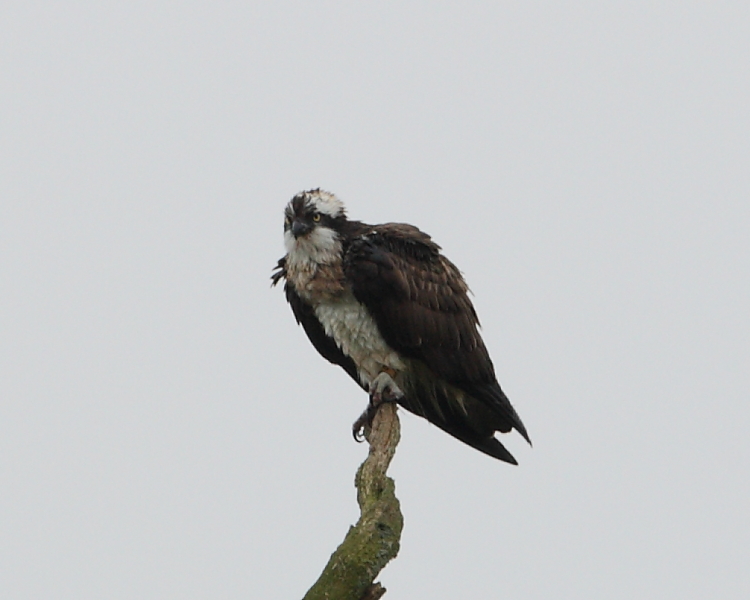
Wednesday 27th March [Sunny and a bit warmer this morning, though we had snow flurries this afternoon]
We had a bit of early morning sunshine at last, and although an Osprey Pandion haliaetus was seen at 0800 hrs on The Island by Chris Cardno and it or another seen by Dave Nevitt at Top End, I didn't see any during my 2 hour stint mid-late morning. John Thorogood and his wife watched a bird at the Pumping Station around lunchtime briefly, and this afternoon the fisheries staff told me one was over the Pumping Station stew ponds at 1400 hrs and sure enough it stuck around there until 1500 hrs allowing me to get a nice flight shot as it came along the dam wall. One of the observers told me it had a yellow ring on the left leg, suggestive of it being the Scottish bird that has been hanging around, but my photos don't confirm this because the legs were hidden in flight. I saw it again at around 1630 hrs with Julian Thomas for about half to three-quarters of an hour, or so, hunting at Top End and Rugmoor before it was chased up to Butcombe Bank by two Carrion Crows Corvus corone. The Ospreys have done quite well catching fish, no doubt thanks to Bristol Water stocking with trout again on Monday and Tuesday!
There were 13 Sand Martins Riparia riparia again at Top End, and I saw the Common Sandpiper Actitis hypoleucos in flight a couple of times by the Spillway and along the dam today. I also saw lots of Common Buzzard Buteo buteo display flights in the sunshine this morning and one wonderful kettle of eight behind the Pumping Station. Oh, and 6 Barnacle Geese Branta leucopsis turned up on Rainbow Point this evening.
Thursday 28th March [Cold, with some lovely sunny spells]
Mike O'Connor emailed to tell me "2 Ospreys Pandion haliaetus were over the dam at 0745 hrs this morning. One appeared to have a pale ring on the right leg, but was unable to read it."
Wow! What a day it's been again. 2 Ospreys showing very well at the Pumping Station, on and off, and I found the (or, a) summer-plumaged Black-necked Grebe Podiceps nigricollis at Bell's Bush. A couple more Osprey images in the Recent Images Gallery. Simon Mackie (cheers mate) has sent me some super flight shots of ochre 'Z|T' which I've put in Guests Photo Gallery to share with you dear reader. Ian Stapp reported a Red Fox Vulpes vulpes on the North Shore and he and Roy Curber both noted a Badger Meles meles out in the daylight (not a good sign) around the Home Bay area. I'll look out for it tomorrow, in case it's unwell.
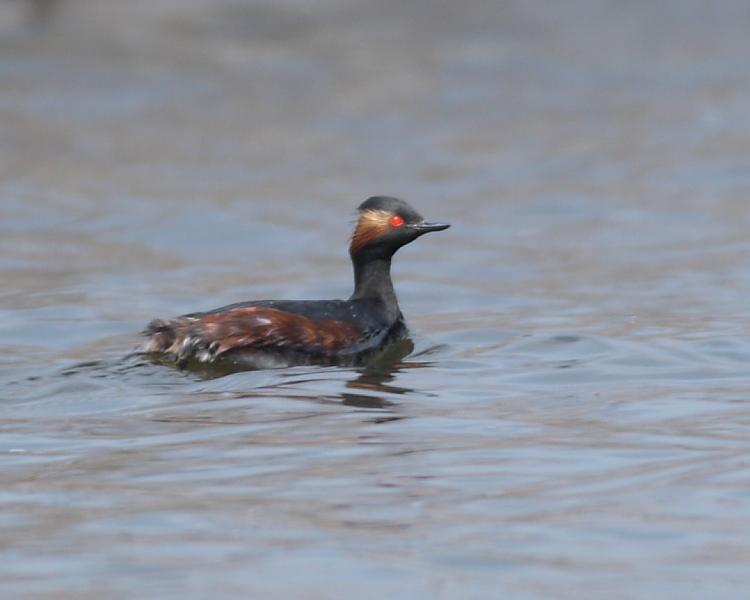
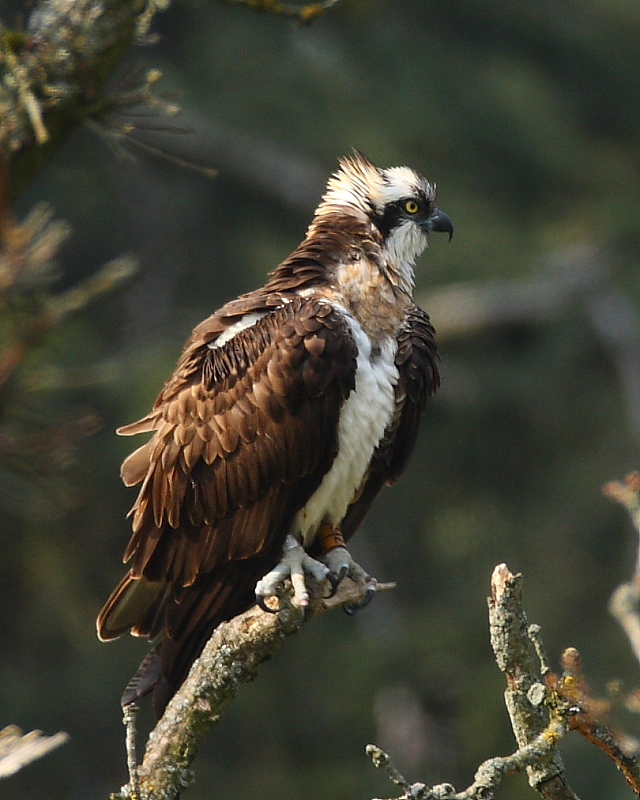
We watched the Scottish-ringed ♀ Osprey go in at Cheddar Water mid-morning but it couldn't lift the fish out, so let go. Then, around lunchtime, it went in off Green Lawn and swam ashore with another big trout but was disturbed off the catch by a boat coming right in close to the shore beside it (unwittingly). I think the gulls profited. Both birds were reported at the dam mid-afternoon and at least one was at the Pumping Station at around 1700 hrs, according to Rich Allsop, who emailed to say that it flew down the lake and caught another fish before disappearing from sight.
Joanna Dailey contacted Allan Chard and I about Osprey white 'YA' as follows: "Please see the blog for the photo of White YA, who almost certainly bred at Kielder last year! http://kielderospreys.wordpress.com" As I replied to Joanna, that would be an extraordinary coincidence because my father opened a small business in Kielder, Northumberland in the late 1960s before Kielder Water was flooded. Anyway, it's nice to report that YA is breeding in England.
Roy Dennis has just sent me the following information about the bird shown above: "Brilliant photo - this is an old female - ringed either in 1998 or 1999 by Keith Brockie in Perthshire/Tayside." Keith has subsequently contacted me this evening and written: "This was ringed as a chick 1311981, ochre Z bar T left colour ring, ex brood 3/3, 9th July 1998, at... Bridge of Cally, Perthshire. Subsequently she has only been seen once visiting an eyrie ... near Dundee, on 24th April 2002." Ochre Z|T is getting on a bit at 15 years old, but the longevity record for a ringed Osprey according to the BTO website is 20 yrs 11 months.
Friday 29th March [Cool, with sunny spells]
Karle Burford reported an Osprey Pandion haliaetus over the dam at 0740 hrs, and Simon Isgar saw 2 at 0830 hrs. Then, at 1130 hrs we had some drama. John Harris of the fisheries team rang me to say one of the birds was stuck under the netting over the stew ponds at the Pumping Station. Luckily, I was on the dam chatting to BTO ringer Dave Nevitt at the time, so we went down and Dave caught the bird, which turned out to be the ♂, white 'YA' (see images). While we were there, the ♀, ochre 'Z|T', flew overhead as well. Dave checked the captured bird over and we were surprised to find that its breast bone was quite prominent and not in the best condition, though he seemed fine otherwise. So, I guess this is the time for me to appeal to the BW permit holders with cameras to please give the birds a wide berth while they're fishing or eating at the lakeside, their welfare must come first. Also, it is a schedule 1 species. They do give great photo opportunities by the dam on their own terms after all. There were still 13 Sand Martins Riparia riparia at Top End and Gary Thoburn rang me late this afternoon to say he'd found the summer-plumaged Black-necked Grebe Podiceps nigricollis back among the flooded trees at Wood Bay Point.


Saturday 30th March [Milder than of late with some sunny spells, but the wind was cold]
Ray Bradley, among others, saw both Ospreys Pandion haliaetus this morning around Butcombe Bay but ♂ white 'YA' did his usual thing and flew off east along the lake. The ♀, ochre 'Z|T', has been hanging around the Pumping Station grounds all day and making occasional forays out along the south side of the lake where she caught at least one sizeable trout though there was a suspicion that she dumped it, out of sight of the watchers on the dam, before coming back to the Pumping Station. I've noticed this behaviour by both birds during the week. Can any of you Osprey workers out there explain why they do this?
Then, this evening, things went from amazing to truly extraordinary! When I left the dam at about 1845 hrs ♀, ochre 'Z|T' was sitting in a tree at the Pumping Station. Also, in the grounds of the Pumping Station ♂ white 'YA' was sitting in a tree until a 3rd bird flew in. They flew out over the dam together, all the while a 4th bird, a ringed ♀ with a yellow/ochre ring (possibly on the right leg), was sitting in trees on the North Shore.
Chris Teague from Yate kindly sent me some pictures today of ♂ Osprey white 'YA' being rescued that I've posted in the Guests Photo Gallery.
I had a quick look for the Black-necked Grebe Podiceps nigricollis but didn't see it, however, Alex Carlisle sent me belated news of it at Hellfire Corner this afternoon. There was a small group of Sand Martins Riparia riparia still at Top End feeding among the flooded trees and the Common Sandpiper Actitis hypoleucos was around the dam all day.
Sunday 31st March [Sunny with a cold wind]
I was at the lake with Simon Isgar at 0700 hrs this morning. We didn't see any Ospreys Pandion haliaetus until 0800hrs when one flew west up the lake and perched in the Pumping Station grounds. Then, we realised there was another bird in the same tree. Both appeared to be ♀♀, one of which was ochre 'Z|T', who sat around for a long time. I last saw her at about 1035 hrs flying behind the trees on Butcombe Bank.
This afternoon, ♂ white 'YA' came flying up the lake from Top End at 1420 hrs and spent some time around the Pumping Station and hunting over the lake. Then, just as I popped home to get some bat equipment at 1600 hrs, Ray Bradley rang to say he'd gone under the nets over the stew ponds again. I mobilised Paul of BW fisheries team and Dave Nevitt, who nearly gave up his Sunday roast, to come and help capture him again. We were going to try and drive him down to the end of the channel after pulling back the nets, so that he could fly out without having to be handled, but he had other ideas. We caught him after a couple of attempts and released him when Dave had given him a quick check over. He'd eaten a whole 2lb trout while we rolled into action, and Dave said he had more fat on him this time which was a plus. He flew off over the dam, on release, looking a bit dishevelled. I wasn't able to stay after that but Mike Jenkins let me know there was an Osprey still around until dusk and a White Wagtail Motacilla alba alba on the dam with the Pieds and Greys. I'll add some more pictures, that have kindly been sent to me, on the Guests Photo Gallery during the evening. Thanks to all concerned.
4 Sandwich Terns Sterna sandvicensis flew west over the dam at about 0930 hrs, while Hilary Raeburn and Chris Teague both reported the Black-necked Grebe Podiceps nigricollis at Wood Bay Point this afternoon.
